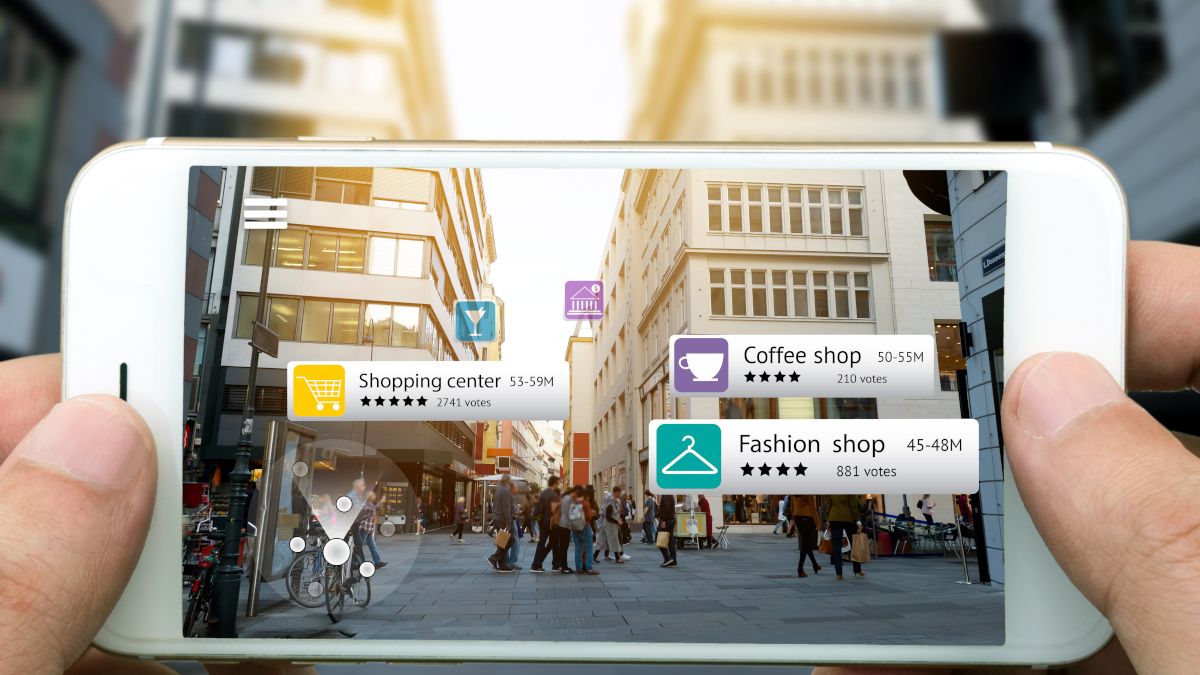Quick Links
Augmented reality (AR) layers digital imagery and sounds over the real world, blending the virtual with the real. Persistent augmented reality extends the existence of AR content beyond when you're using them, giving them a permanent place in the world.
The AR Cloud or Spatial Web
Imagine that the real world had a digital twin. For every physical location on Earth, there's a corresponding virtual map that's overlaid on the real world. This map is maintained in the cloud and anyone with a network connection can access that data.
This is the AR cloud or "spatial web." It means that any device with the right hardware and software can see this augmented reality world. Different users can share the experience and see the same things happening in real-time.
Of course, there can be multiple AR clouds that belong to different hosts. It's like adding multiple dimensions to the real world, letting you switch between them.
Persistent AR Objects
Cloud AR and the idea of the spatial web are different from another type of AR that's also sometimes referred to as "persistent." The other type of persistence simply means that if you look away from an AR object, like a virtual screen on a wall, it will still be there when you look back. This type of AR object persistence is a key feature of mobile AR APIs (Application Programming Interfaces) such as Apple's ARKit and Google's ARCore.
What makes it a little more confusing is that Cloud AR applications that form part of the spatial web also use this local type of persistence, but they are different concepts. One is about mapping and tracking the local space the user is in and the other is about keeping a record of spaces in the real world and mapping them to AR content, then making that information available over the internet.
Persistent AR and the Metaverse
The word "metaverse" has been cropping up frequently these days, fuelled by companies like Facebook, which has decided to rebrand itself as "Meta" to show that their focus is now on building these metaverse virtual worlds.
The classic idea of a metaverse, as per fictional depictions like Snow Crash and Ready Player One, is a virtual reality (VR) world that the user completely immerses themselves in. You escape the real world completely, rather than seeing virtual world content integrated with the real world.
This has the same fundamental problem VR as a whole does when it comes to adoption. By making the experience a discrete one that people have to consciously turn on or off, it makes it difficult to become a part of daily life. People can easily switch between checking their digital life and engaging in the real world.
A metaverse that's accessed through augmented- or mixed-reality can become a part of daily life in a way that VR can't match. The real world becomes metaverse-enhanced, rather than requiring that people escape reality to visit the metaverse.
The End of Screens (and More)?
If the world has spatial web or augmented reality content that everyone can experience persistently at the same time, why would you need discrete screens? You can have virtual displays that everyone wearing mixed-reality glasses can see. Setting aside how far headset technology needs to advance to match the technical quality of our displays, and assuming we match or surpass that, we could be heading into a screenless world.
Even more radically, other mainstays of modern life might also move into the spatial cloud. Why have giant billboards or physical advertising? Why paint or decorate anything? Do we still need to build physical art installations? Think of anything in the real world today that's only ever looked at and never touched, and that can likely be replaced by persistent AR.
The world of the future might look very bland to anyone who isn't wearing a pair of AR glasses (or eventually implants) but might resemble something from Blade Runner or Cyberpunk 2077 when you put them on.
We don't have to share the same persistent AR worlds either. Different people may have different aesthetic preferences for their environments, and persistent AR allows for customization for the user experience.
Does Persistent AR Have Downsides?
Think about this: everyone has one or more GPS devices with them these days, but you can still buy a paper map at a gas station. No digital technology can promise 100% uptime and something just can't be left up to chance. So danger signs, navigational road markings, and other mission-critical visual elements will likely always remain physical or have a physical fallback option.
There's also a lot of work that has to be done to ensure that humans exploring the spatial web can do it safely. You don't want people thinking a real object is virtual or vice versa!
Persistent AR has the potential to be more disruptive than any of the big web technologies we've experienced so far, but there's no doubt that it's going to be interesting!

